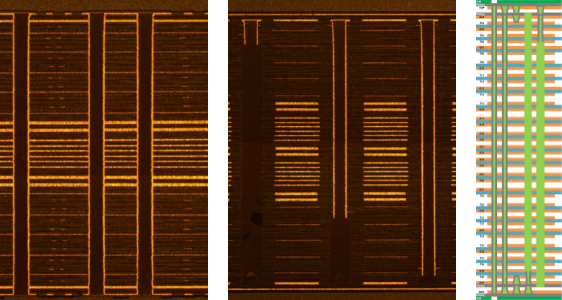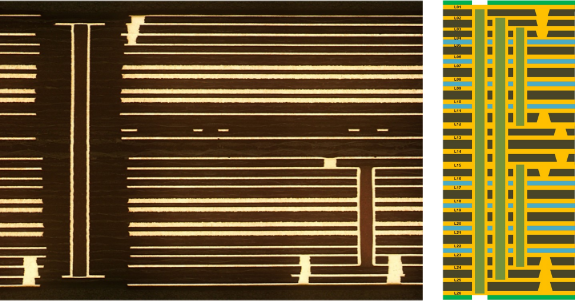MLB
- Wired Network
- Optical Module
Wired Network
Applications
Wired network is a PCB that is applied to the switch/router that is used to connect a device such as laptop or desktop to the Internet or other networks using a cable. The most common form of wired network is using a cable, connecting one end of the cable to the Ethernet port of a network router, and the other end to a computer or other device.
Key features
Back Drilling
Back drilling is a manufacturing method designed to minimize the loss of high-speed signal that passes through PTH by eliminating non-essential points.Double Drilling
Drilling requires high processing precision as a method of processing PTH at the same point using bits of the same specification.
The processing method of drilling is important to increase the PTH processing precision for high AR products.High Aspect Ratio
It is gradually increasing in order to enable high-speed transmission of high-capacity data.

Optical Module
Applications
Optical module generally refers to a PCB that is used in the plug-in transceiver designed for broadband data communication.
An optical module generally consists of an interface, which is applied to the connecting part inside the system, and a plug-in module, which is applied to the fiber optic cable.Key features
BVH +3N3 Structure
BVH +3N3 Structure uses the LVH buildup structure for high-speed signal transmission, and requires the registration technology to prevent tilting of LVH in each layer, and a high level of reliability to prevent the separation of the LVH interface.
